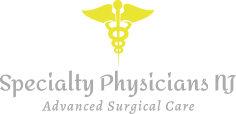Reflux Surgery
Reflux surgery is performed to treat gastric reflux symptoms and prevent damage to the oesophagus. The different types of reflux surgeries include endoluminal gastroplication or endoscopic fundoplication technique and Nissen’s fundoplication.
Gastric reflux, also called gastro-esophageal reflux disease (GERD), is a condition where the stomach’s contents (food or liquid) rise up from the stomach into the oesophagus, a tube that carries food from the mouth to the stomach.
Some of the non-surgical treatment options for gastric reflux include:
Antacids:
over-the-counter medicines that provide temporary relief to heartburn and indigestion by neutralizing acid in the stomach
Other medications: reduce the production of acid in the stomach
If conservative treatment options fail to resolve your GERD, Dr. Shakov may recommend you surgery. The different types of reflux surgeries include:
Endoluminal gastroplication or endoscopic fundoplication technique:
minimally-invasive method that requires the use of an endoscope with a sewing device attached to the end, known as an EndoCinch device. This instrument places stitches in the stomach below the LES to create a plate which helps reduce the pressure against the LES and strengthen the muscle.Nissen’s fundoplication: is a surgical procedure in which the upper part of the stomach is wrapped around the end of your oesophagus and oesophageal sphincter, where it is sutured into place. This surgery strengthens the sphincter and helps prevent stomach acid and food from flowing back into the oesophagus.
Nissen Fundoplication Procedure
Nissen Fundoplication is performed on an outpatient basis under general anesthesia. Steps involved in Nissen Fundoplication procedure include:
- Your surgeon makes a small incision in the upper abdomen and inserts a tube called a trocar through which the laparoscope is introduced into the abdomen. A laparoscope is a long, narrow telescope with a light source and video camera at the end. The scope is passed through a tiny incision into the abdomen where images from the camera are projected onto a large monitor for the surgeon to view. Laparoscopes have channels inside the scope enabling your surgeon to pass gas in and out to expand the viewing area or to insert tiny surgical instruments for treatment purposes.
- Additional small incisions may be made for other surgical instruments.
- With the images from the laparoscope as a guide, your surgeon wraps the upper part of the stomach, the fundus, around the lower oesophagus to create a valve, suturing it in place.
- The hole in the diaphragm through which the oesophagus passes is then tightened with sutures.
- The laparoscope and other instruments are removed and the gas released.
- The tiny incisions are closed and covered with small bandages.
Post–operative information
After the surgery, you should keep the area clean and dry, and not shower or bathe during this time. The incisions usually heal in about 5 days. You may feel soreness around the incision areas. If the abdomen was distended with gas, you may experience discomfort in the abdomen, chest or shoulder area for a couple of days while the excess gas is being absorbed. Contact Dr. Shakov immediately if you have a fever, chills, increased pain, bleeding or fluid leakage from the incisions, chest pain, and shortness of breath, leg pain or dizziness.
Benefits of this approach
Laparoscopy is much less traumatic to the muscles and soft tissues than the traditional method of surgically opening the abdomen with long incisions (open techniques). It is also associated with a shorter hospital stay, less post-operative pain and faster recovery.
Preparation
Before the procedure, you may be instructed to be on a liquid diet for two days. Your surgeon will prescribe a solution for you the day before surgery to cleanse your bowel.
Outcome
Surgery is found to be beneficial in approximately 92% of patients. However, as with any surgery, Nissen Fundoplication may involve certain risks and complications which include infection, injury to blood vessels, stomach or oesophagus, swallowing difficulties, gas embolism (gas bubbles in the bloodstream) and the need for a laparotomy (performed through a larger abdominal incision). Sometimes, the new valve weakens or loosens months or years after the surgery, causing symptoms again. If symptoms are severe, the surgery may need to be repeated.
Post-op stages of recovery and care plan
Your surgeon may give you a prescription pain medicine or recommend non-steroidal anti-inflammatory drugs (NSAIDs) for the first few days to keep you comfortable. Your surgeon may instruct you about your diet and activity restrictions. Care should be taken with your wound. You are advised not to lift heavy objects for 8 to 12 weeks.
Down-time lifestyle or off- work duration
Shortly after surgery, you can gradually resume your daily activities. You are encouraged to start walking as early as possible to reduce the risks of blood clots and pneumonia. You will be able to get back to work in 2 to 3 weeks.
